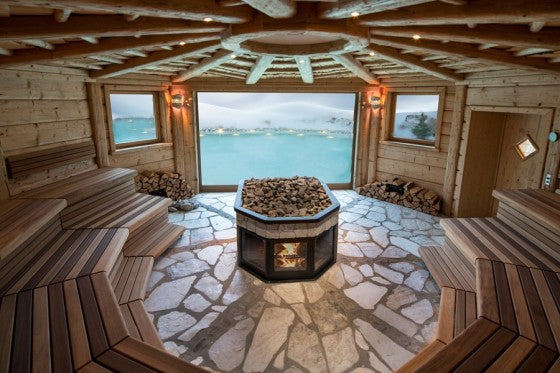In our fast-paced, modern lives, the act of caring for oneself often becomes a checklist rather than a cherished moment. But across cultures, self-care has long been ritualised—embedded in daily or seasonal rhythms that prioritise well-being as a sacred act. These time-honoured traditions aren’t just about beauty or hygiene—they’re about restoration, connection, and intention.
Let’s take a journey across the globe to explore powerful self-care rituals rooted in culture, nature, and history—each offering timeless wisdom for living well.
1. Ayurvedic Self-Massage (India)
In Ayurveda, the traditional system of Indian medicine, self-massage—or Abhyanga—is a daily ritual believed to nourish the body, calm the mind, and balance energy. Herbal oils tailored to one's dosha are gently warmed and massaged into the skin, stimulating circulation and promoting detoxification. It’s more than physical care—Abhyanga is seen as an act of self-love and mindfulness that aligns the body with nature’s rhythms.
Benefits: It promotes circulation, nourishes the skin, supports joint health, and provides a grounding, stress-relieving effect that enhances overall vitality.
2. Hygge (Denmark)
Hygge is a Danish concept centred around comfort, coziness, and well-being. While not a "ritual" in the traditional sense, it permeates daily life in Denmark, especially during the darker winter months. It’s about creating an atmosphere of warmth and presence—through soft lighting, meaningful conversations, nourishing food, and mindful slowing down. Hygge reflects the belief that true wellness is found in the ordinary moments shared with care.
Benefits: Hygge encourages emotional well-being, reduces stress, and strengthens social bonds. It fosters a sense of safety, calm, and presence—especially valuable in colder, darker seasons.
3. Onsen (Japan)
Japan’s onsen—natural geothermal hot springs—are deeply embedded in the country's wellness culture. Bathing in mineral-rich waters is believed to relieve stress, soothe muscles, and improve skin health. Onsen visits often involve a quiet, reflective experience that honours the connection between body, earth, and spirit. The ritual includes proper cleansing beforehand, silence during the soak, and a deep respect for nature's healing elements.
Benefits: The high mineral content of the water soothes muscles, improves circulation, enhances skin health, and aids in stress relief and deep relaxation.
4. Jjimjilbang Spas (Korea)
In South Korea, jjimjilbangs are public bathhouses that offer a holistic approach to wellness through hot and cold baths, saunas, clay rooms, rest areas, and communal spaces. These spas serve not only as places of cleansing but as hubs for community, relaxation, and rejuvenation. Traditional treatments, such as body scrubs and herbal steams, are part of the experience—offering a full-body reset that merges physical detox with cultural tradition.
Benefits: These spas promote detoxification, relieve muscle tension, and improve skin health. The communal nature also supports emotional well-being and a sense of belonging.
5. Roman Baths (United Kingdom)
Dating back to the Roman Empire, communal baths were places for socialising, healing, and ritual purification. In the UK, the city of Bath still houses ancient Roman thermal spas, echoing this heritage. The sequence of hot, warm, and cold baths—along with steam rooms and massages—was believed to support circulation, detoxify the body, and elevate the spirit. Roman bathing emphasised the therapeutic value of water, structure, and communal wellness.
Benefits: Alternating temperatures boosts circulation, clears the skin, eases joint pain, and revitalises the senses. Roman bathing also emphasises rest and social connection.
6. Hammam Bathing (Turkey)
The hammam is a traditional Turkish bath rooted in Ottoman culture, drawing influence from Roman and Islamic cleansing practices. The ritual involves a warm steam room, followed by a vigorous exfoliation with a kese mitt and a foamy massage. Beyond its cleansing effects, the hammam is a deeply social and spiritual experience—symbolising purification and renewal. It remains a cherished cultural tradition that intertwines hospitality and healing.
Benefits: This practice deeply exfoliates the skin, improves blood flow, and aids detoxification. It also releases tension and offers a sense of spiritual purification and clarity.
7. Melukat (Bali)
Melukat is a Balinese purification ceremony that involves bathing in sacred water sources, guided by a Balinese priest. It’s believed to cleanse the mind, body, and spirit from negative energies and emotional burdens. Often performed in temples or holy springs, Melukat reflects the deep spiritual philosophy of Balinese Hinduism, where water is seen as a divine force of purification and connection to the divine.
Benefits: Melukat helps relieve anxiety, clear mental and emotional blockages, and restore spiritual harmony. It reconnects individuals with nature, community, and their inner selves.
8. Temazcal (Mexico/USA)
Originating from Indigenous Mesoamerican cultures, the temazcal is a sweat lodge ceremony led by a shaman or healer. It takes place inside a domed structure where volcanic stones are heated and infused with medicinal herbs, creating steam. The ritual includes chanting, guided breath work, and symbolic rebirth. In both Mexico and parts of the southwestern USA, temazcal ceremonies are respected as ancestral healing practices that detoxify the body and renew the spirit.
Benefits: Temazcal enhances detoxification through intense sweating, supports respiratory health, relieves physical tension, and offers emotional and spiritual renewal.
9. Russian Banya (Russia)
The banya is Russia’s traditional sauna experience, combining extreme heat, cold plunges, and the use of a venik—a bundle of leafy branches (often birch)—used to gently beat the body to stimulate circulation. The ritual is not just about physical purification, but also camaraderie, stress relief, and mental clarity. The banya reflects a powerful belief in contrast therapy: heat followed by cold to awaken the body and mind.
Benefits: This practice improves immunity, boosts circulation, relieves muscle pain, and deeply invigorates the body. The heat-cold contrast also stimulates endorphin release for an elevated mood.
These self-care rituals, though rooted in different cultures and environments, share a common thread: intentionality. They remind us that wellness isn’t just about results—it’s about presence, rhythm, and reverence for the body and soul. Whether performed daily or seasonally, alone or in community, these practices offer more than relaxation—they offer connection.
By honouring ancient traditions, we can craft modern rituals that nurture not only our health—but our humanity.

